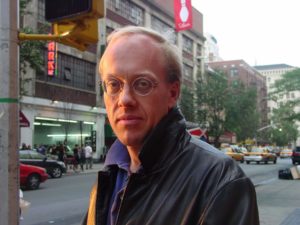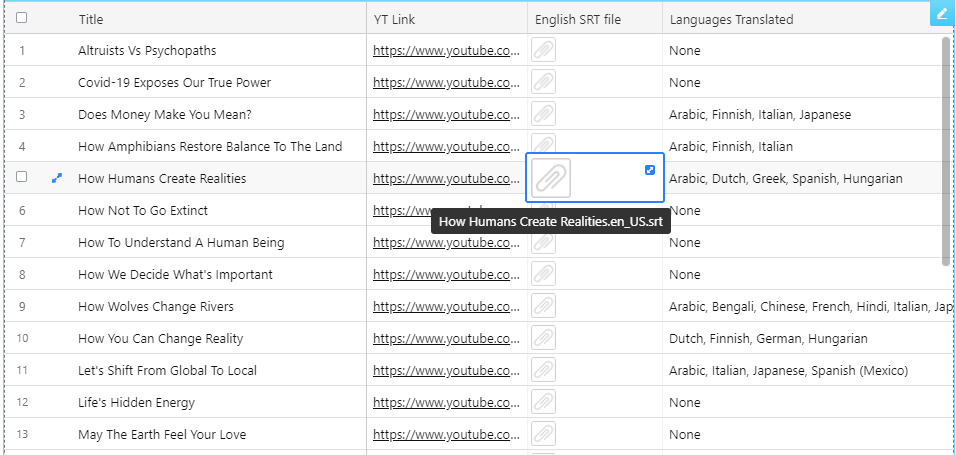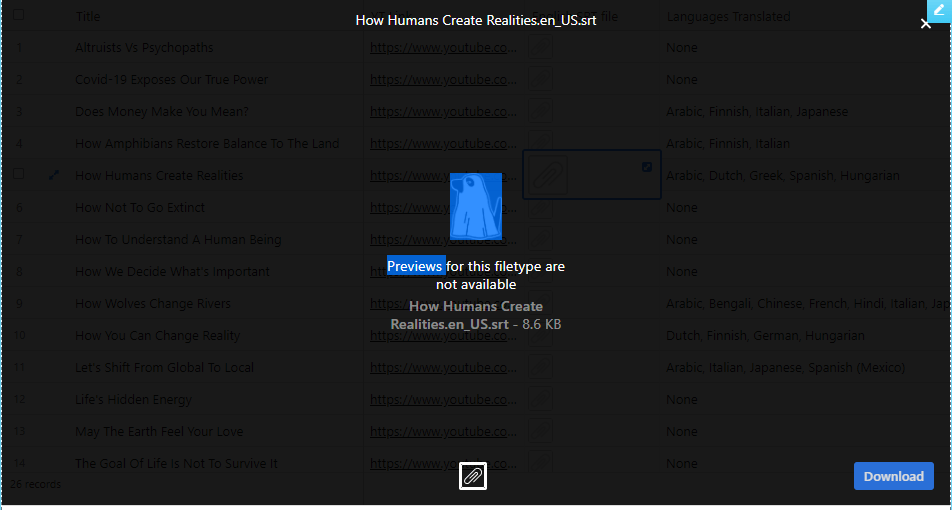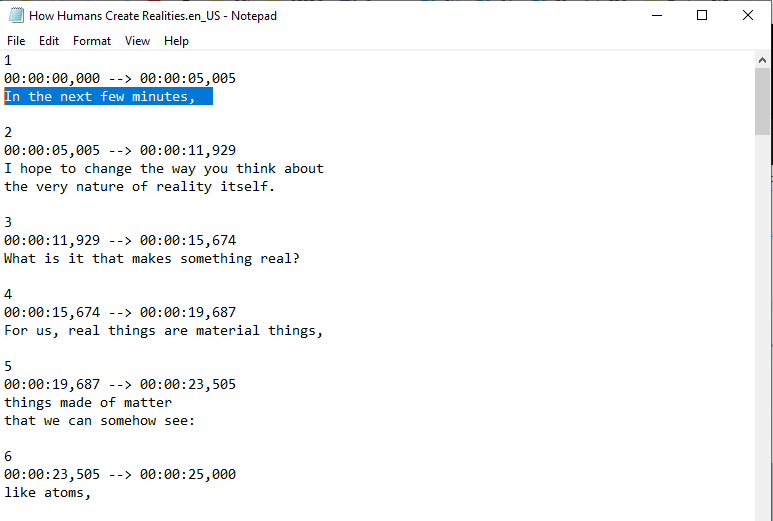
If there was one path to happiness, only one, and reuniting with my family hinged upon it, could I learn to forgive, respect, and even mourn the loss of my worst ‘enemy’?

Mass shootings are difficult to understand. Most of us resort to judgment and leave it there. But if you really want something to stop, you must seek to understand where it originated. Author and Pulitzer Prize winning journalist, Chris Hedges, explains America’s gun fetish, why people in America cling to its guns, and what we must do if we ever hope to change this culture.
Guns were a ubiquitous part of my childhood. Like many boys in rural America, I was fascinated by guns, although I disliked hunting. Two decades as a reporter in war zones, however, resulted in a deep aversion to weapons. I saw what they did to human bodies.
America’s gun fetish and culture of vigilante violence makes the U.S. very different from other industrialized nations. This is the reason there will never be serious gun control. It does not matter how many mass shootings take place, how many children are butchered in their classrooms, or how high the homicide rate climbs.
There are nearly 400 million guns in the U.S., some 120 guns for every 100 Americans. Half of the privately-owned guns are owned by 3 percent of the population.
Guns made lower working-class people feel powerful, even when they were not. Take away their guns and what was left? Decaying small towns, shuttered textile and paper mills, dead-end jobs, seedy bars where veterans drank away their trauma. Take away the guns, and the brute force of squalor, decline, and abandonment hit you in the face like a tidal wave.
America fetishizes guns. This fetish has intensified among white working-class men, who have seen everything slip beyond their grasp: economic stability, a sense of place within the society, hope for the future and political empowerment. The fear of losing the gun is the final crushing blow to self-esteem and dignity, a surrender to the economic and political forces that have destroyed their lives. They cling to the gun as an idea, a belief that with it they are strong, unassailable, and independent.
White people built their supremacy in America and globally with violence. They massacred Native Americans and stole their land. They kidnapped Africans, shipped them as cargo to the Americas, and then enslaved, lynched, imprisoned, and impoverished Black people for generations. They have always gunned down Black people with impunity, a historical reality only recently discernable to most white people because of cell phone videos of killings.
The Second Amendment was designed to solidify the rights, often demanded under state law, of whites to carry weapons. Southern white men were not only required to own guns but serve in slave patrols. These weapons were used to exterminate the indigenous population, hunt down enslaved people who escaped bondage and violently crush slave revolts, strikes and other uprisings by oppressed groups. Vigilante violence is wired into our DNA.
When the national mythology inculcates into a population that it has the divine right to kill others to purge the earth of evil, how can this mythology not be ingested by naïve and alienated individuals? Kill them overseas. Kill them at home. The more the empire deteriorates, the more the impetus to kill grows. Violence, in desperation, becomes the only route to salvation.
The specter of societal collapse, less and less a conspiracy theory as we barrel to climate breakdown, reinforces the gun fetish. Survivalist cults, infused with white supremacy, paint the scenario of gangs of marauding Black and brown people fleeing the chaos of lawless cities and ravaging the countryside. These hordes of Black and brown people, the survivalists believe, will only be kept at bay with guns, especially assault-style weapons.
The gun enforced white supremacy. It should not be surprising that it is embraced as the instrument that will prevent whites from being dethroned.
The longer we remain in a state of political paralysis, dominated by a corporate oligarchy that refuses to respond to the mounting misery of the bottom half of the population, the more the rage of the underclass will find expression through violence.
Those who cling to the mythology of white supremacy cannot be reached through rational discussion. Mythology is all they have left. When this mythology appears under threat it triggers a ferocious backlash, for without the myth there is an emptiness, an emotional void, a crushing despair.
America has two choices. It can reintegrate the dispossessed back into the society, or it can leave its underclass to wallow in the toxins of poverty, hate and resentment, fueling the blood sacrifices that afflict us.
 Christopher Hedges is an American journalist, Presbyterian minister, author and television host. Hedges spent nearly two decades as a foreign correspondent in Central America, West Asia, Africa, the Middle East (he is fluent in Arabic), and the Balkans. He has reported from more than fifty countries, and has worked for The Christian Science Monitor, NPR, Dallas Morning News, and The New York Times, where he was a foreign correspondent for fifteen years (1990–2005) serving as the paper’s Middle East Bureau Chief and Balkan Bureau Chief during the war in the former Yugoslavia.
Christopher Hedges is an American journalist, Presbyterian minister, author and television host. Hedges spent nearly two decades as a foreign correspondent in Central America, West Asia, Africa, the Middle East (he is fluent in Arabic), and the Balkans. He has reported from more than fifty countries, and has worked for The Christian Science Monitor, NPR, Dallas Morning News, and The New York Times, where he was a foreign correspondent for fifteen years (1990–2005) serving as the paper’s Middle East Bureau Chief and Balkan Bureau Chief during the war in the former Yugoslavia.
“This is awesome! I read the article when it came out, but the video makes everything more vivid. In particular, I got a real sense of how that problematic type of White American Masculinity gains its coherence through the act of looking down the sights of a gun, aimed at an enemy thought to be weak, but insolently out of place/in the wrong place. It’s about maintaining a social order and keeping people in their place, and so it truly is policing. Even if it’s among gangs, the gangs are policing their boundaries. Political militias are policing ideological boundaries and keeping people in their place. The empire polices a particular world order. That steely, unyielding, disciplinary gaze that can only be taken seriously if you’re looking at it on the wrong side of a firearm aimed at you. Otherwise, the pretense of authority of would-be enforcer would be laughable. But the gun makes it serious, and the man losing his caste statues wants to be taken serious as a local embodiment of the imperium. This helped me see the absolute continuity between the imposition of slavery/genocide that shaped the country, the global US empire, and the need for some dispossessed white men domestically to suit up with weapons, to put on the aura of that imperial subject and feel American again. I knew all this intellectually before, but all those full-face shots of people staring at me down gun barrels made me understand that their mushy sense of selves coalesced – and felt whole for them – with the focal point of the gun to organize their selfhood around. So they prowl around actual and symbolic enclaves, enforcing order. Totally alienated youth looking for a “something” to be disrupt the order they feel excluded by, but they still recuperate a sense of a consolidated self by organizing the fragments of themselves around the imperial agency of a gun. All the visuals in your video have made the intellectual argument infinitely more real to me. I could really feel my way around this gun-identity complex. Thank you (and Chris) for this work!”
This video was adapted from Hedges’s article “America’s Gun Fetish“.
Music:
Mass shootings are difficult to understand. Most of us resort to judgment and leave it there. But if you really want something to stop, you must seek to understand where it originated. Author and Pulitzer Prize winning journalist, Chris Hedges, explains America’s gun fetish, why people in America cling to its guns, and what we must do if we ever hope to change this culture.
Guns were a ubiquitous part of my childhood. Like many boys in rural America, I was fascinated by guns, although I disliked hunting. Two decades as a reporter in war zones, however, resulted in a deep aversion to weapons. I saw what they did to human bodies.
America’s gun fetish and culture of vigilante violence makes the U.S. very different from other industrialized nations. This is the reason there will never be serious gun control. It does not matter how many mass shootings take place, how many children are butchered in their classrooms, or how high the homicide rate climbs.
There are nearly 400 million guns in the U.S., some 120 guns for every 100 Americans. Half of the privately-owned guns are owned by 3 percent of the population.
Guns made lower working-class people feel powerful, even when they were not. Take away their guns and what was left? Decaying small towns, shuttered textile and paper mills, dead-end jobs, seedy bars where veterans drank away their trauma. Take away the guns, and the brute force of squalor, decline, and abandonment hit you in the face like a tidal wave.
America fetishizes guns. This fetish has intensified among white working-class men, who have seen everything slip beyond their grasp: economic stability, a sense of place within the society, hope for the future and political empowerment. The fear of losing the gun is the final crushing blow to self-esteem and dignity, a surrender to the economic and political forces that have destroyed their lives. They cling to the gun as an idea, a belief that with it they are strong, unassailable, and independent.
White people built their supremacy in America and globally with violence. They massacred Native Americans and stole their land. They kidnapped Africans, shipped them as cargo to the Americas, and then enslaved, lynched, imprisoned, and impoverished Black people for generations. They have always gunned down Black people with impunity, a historical reality only recently discernable to most white people because of cell phone videos of killings.
The Second Amendment was designed to solidify the rights, often demanded under state law, of whites to carry weapons. Southern white men were not only required to own guns but serve in slave patrols. These weapons were used to exterminate the indigenous population, hunt down enslaved people who escaped bondage and violently crush slave revolts, strikes and other uprisings by oppressed groups. Vigilante violence is wired into our DNA.
When the national mythology inculcates into a population that it has the divine right to kill others to purge the earth of evil, how can this mythology not be ingested by naïve and alienated individuals? Kill them overseas. Kill them at home. The more the empire deteriorates, the more the impetus to kill grows. Violence, in desperation, becomes the only route to salvation.
The specter of societal collapse, less and less a conspiracy theory as we barrel to climate breakdown, reinforces the gun fetish. Survivalist cults, infused with white supremacy, paint the scenario of gangs of marauding Black and brown people fleeing the chaos of lawless cities and ravaging the countryside. These hordes of Black and brown people, the survivalists believe, will only be kept at bay with guns, especially assault-style weapons.
The gun enforced white supremacy. It should not be surprising that it is embraced as the instrument that will prevent whites from being dethroned.
The longer we remain in a state of political paralysis, dominated by a corporate oligarchy that refuses to respond to the mounting misery of the bottom half of the population, the more the rage of the underclass will find expression through violence.
Those who cling to the mythology of white supremacy cannot be reached through rational discussion. Mythology is all they have left. When this mythology appears under threat it triggers a ferocious backlash, for without the myth there is an emptiness, an emotional void, a crushing despair.
America has two choices. It can reintegrate the dispossessed back into the society, or it can leave its underclass to wallow in the toxins of poverty, hate and resentment, fueling the blood sacrifices that afflict us.
“This is awesome! I read the article when it came out, but the video makes everything more vivid. In particular, I got a real sense of how that problematic type of White American Masculinity gains its coherence through the act of looking down the sights of a gun, aimed at an enemy thought to be weak, but insolently out of place/in the wrong place. It’s about maintaining a social order and keeping people in their place, and so it truly is policing. Even if it’s among gangs, the gangs are policing their boundaries. Political militias are policing ideological boundaries and keeping people in their place. The empire polices a particular world order. That steely, unyielding, disciplinary gaze that can only be taken seriously if you’re looking at it on the wrong side of a firearm aimed at you. Otherwise, the pretense of authority of would-be enforcer would be laughable. But the gun makes it serious, and the man losing his caste statues wants to be taken serious as a local embodiment of the imperium. This helped me see the absolute continuity between the imposition of slavery/genocide that shaped the country, the global US empire, and the need for some dispossessed white men domestically to suit up with weapons, to put on the aura of that imperial subject and feel American again. I knew all this intellectually before, but all those full-face shots of people staring at me down gun barrels made me understand that their mushy sense of selves coalesced – and felt whole for them – with the focal point of the gun to organize their selfhood around. So they prowl around actual and symbolic enclaves, enforcing order. Totally alienated youth looking for a “something” to be disrupt the order they feel excluded by, but they still recuperate a sense of a consolidated self by organizing the fragments of themselves around the imperial agency of a gun. All the visuals in your video have made the intellectual argument infinitely more real to me. I could really feel my way around this gun-identity complex. Thank you (and Chris) for this work!”
This video was adapted from Hedges’s article “America’s Gun Fetish“.
Music:
Find out how video storytelling can help your audience resonate with your sustainable idea, research, campaign or product.



We never send solicitations or junk mail and we never give your address to anyone else.


